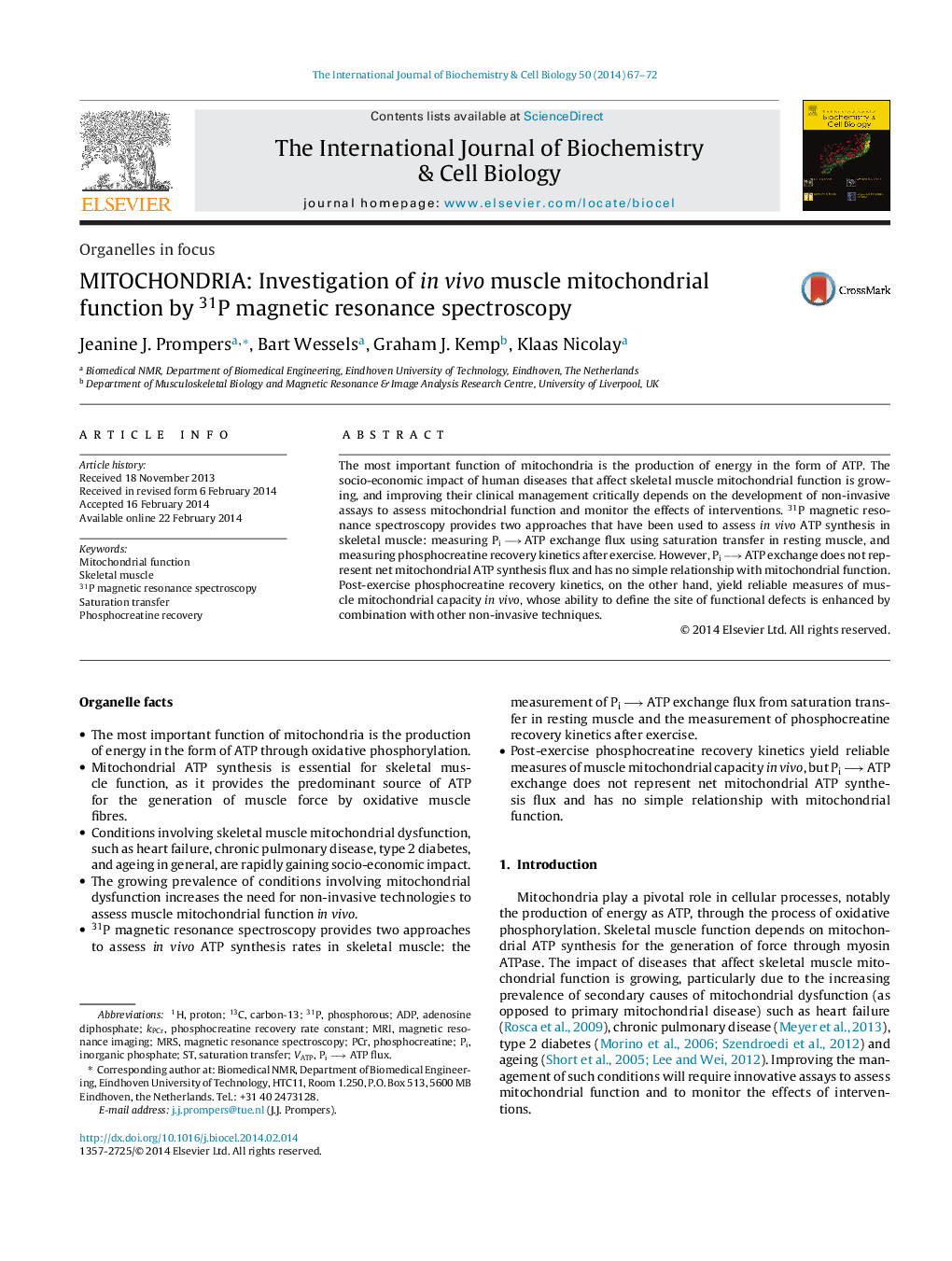| Article ID | Journal | Published Year | Pages | File Type |
|---|---|---|---|---|
| 8323601 | The International Journal of Biochemistry & Cell Biology | 2014 | 6 Pages |
Abstract
The most important function of mitochondria is the production of energy in the form of ATP. The socio-economic impact of human diseases that affect skeletal muscle mitochondrial function is growing, and improving their clinical management critically depends on the development of non-invasive assays to assess mitochondrial function and monitor the effects of interventions. 31P magnetic resonance spectroscopy provides two approaches that have been used to assess in vivo ATP synthesis in skeletal muscle: measuring Pi â¶Â ATP exchange flux using saturation transfer in resting muscle, and measuring phosphocreatine recovery kinetics after exercise. However, Pi â¶Â ATP exchange does not represent net mitochondrial ATP synthesis flux and has no simple relationship with mitochondrial function. Post-exercise phosphocreatine recovery kinetics, on the other hand, yield reliable measures of muscle mitochondrial capacity in vivo, whose ability to define the site of functional defects is enhanced by combination with other non-invasive techniques.
Keywords
Related Topics
Life Sciences
Biochemistry, Genetics and Molecular Biology
Biochemistry
Authors
Jeanine J. Prompers, Bart Wessels, Graham J. Kemp, Klaas Nicolay,
